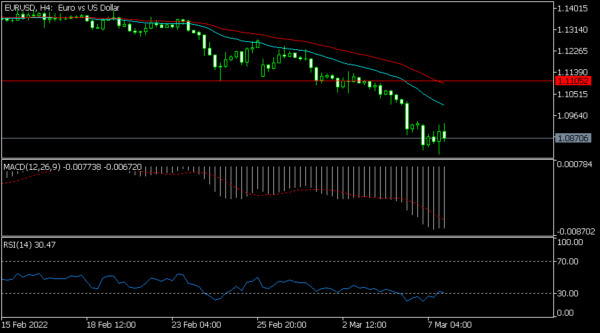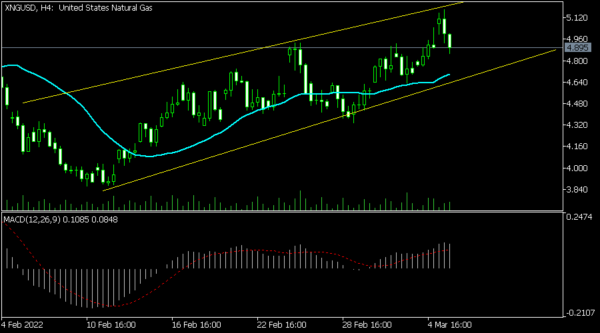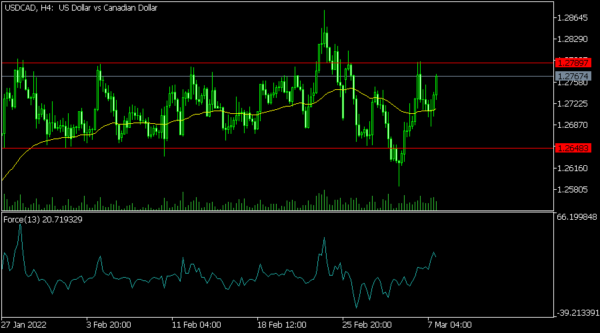Crude oil prices surged to the highest level in more than a decade. Brent, the international benchmark, rose to more than $123 while Western Texas Intermediate (WTI) rose to $120. These are significant levels considering that oil was trading at less than $15 in 2020. The main reason for this performance is that the USA and some western governments are actively considering sanctions on Russian crude. This will be a major development considering that Russia is the third-biggest oil producer in the world after the United States and Saudi Arabia. Natural gas and wheat prices also surged to record highs.
US equities joined other countries’ stocks in a major sell-off on Monday. The Dow Jones index dropped by more than 400 points. The Nasdaq 100 and S&P 500 indices also dropped by over 1.50% while the CBOE VIX index rose by over 6%. Some of the biggest losers were companies in the financial industry like Bank of America and Morgan Stanley. Companies in the aviation industry like American Airlines and Delta also crashed. Firms in the energy industry like Schlumberger, Haliburton, and Baker Hughes rose by almost 10% as oil prices surged.
The economic calendar will be muted on Tuesday as investors continue watching events in Ukraine. In Europe, Eurostat will publish the second estimate of the European Union GDP numbers. Judging by the first estimate, analysts expect the data to show that the economy expanded by 4.6% in Q4 even though Germany was disappointed. The other important numbers will be the United States and Canadian trade numbers. The EIA will also publish the latest short-term energy outlook.
EURUSD
The EURUSD pair decline paused during the US and Asian sessions. It is trading at 1.0870, which was slightly above Monday’s low of 1.0800. On the four-hour chart, the pair moved below the 25-day moving average while the Relative Strength Index (RSI) moved slightly above the oversold level. The MACD is also slightly below the neutral level. Therefore, the pair will likely keep falling as bears target the next key support at 1.0800.
USDCAD
The USDCAD pair rose in the overnight session even as oil prices remained at elevated levels. On the four-hour chart, the pair moved to the 61.8% Fibonacci retracement level. It is inside the key support and resistance levels at 1.2648 and 1.2790. It also moved slightly above the 25-day moving average and has formed an inverted head and shoulders pattern. Therefore, the pair will likely have a bullish breakout in the coming days.
XNGUSD
The XNGUSD pair maintained a bullish trend because of the crisis in Ukraine. The pair rose to a high of 4.90, which is slightly below this week’s high of 5.17. The pair is along the 23.6% retracement level. It has formed an ascending channel that is shown in yellow while the MACD remained above the neutral level. Therefore, the pair will likely maintain a bullish trend.
















